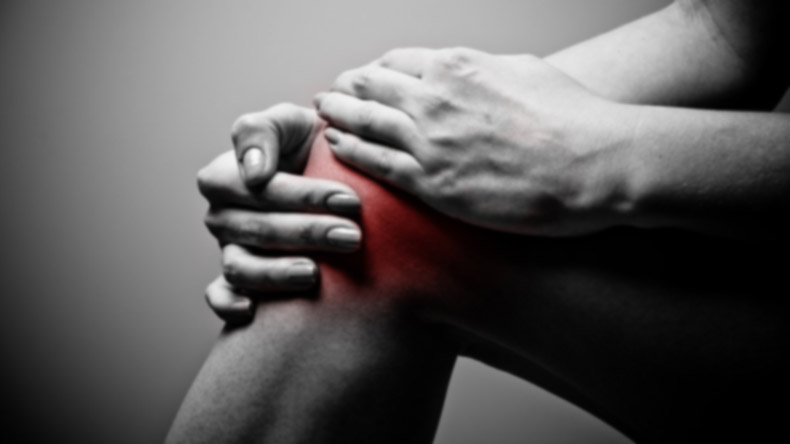
The human knee is the biggest joint of the body and often supports the majority of the body weight, making it highly prone to musculoskeletal degeneration and other traumas. For instance, osteoarthritis is the most common joint disorder in geriatric patients that worsens with age and adversely affects the structure and movement of the knee joint.
When the pain from such disorders and other knee injuries cannot be managed using non-surgical procedures, knee replacement surgery is suggested as the most effective course of action.
The aim of the knee replacement surgery is to reconstruct a pain-free, durable and fully functional knee joint that shows the best performance and aids in better movement after surgery.
Initial Problems with the Procedure
Previously, this procedure was not considered completely effective as, after the surgery, patients suffered from pain, lacked the full function of their joints, often suffered from infections and polyethylene wear-related complications. Another major issue that arose was reduced mobility due to problems in proprioception.
Proprioception can be understood as the ability which allows human beings to sense their leg and arm’s orientation in the environment, even when their eyes are closed.
Therefore, with existing problems in proprioception and motion of their joints, patients complained of not being satisfied with their surgery. For instance, one study in 2010 demonstrated that only in 70% of the total knee procedures, the patient expectations were fully met.
The Solutions with Innovations in Knee-Replacement Surgery
To tackle the negative feedback associated with the knee-replacement procedures, orthopedic surgeons have started focusing more on patient satisfaction and function than just survivorship and function. In the past few years, many studies have been conducted to understand the core reasons behind patient dissatisfaction with knee-replacement surgery and get insights to help patients.
With the advancements in science and technology, new medical procedures, surgical techniques, and prosthetic designs are coming to fore and the knee replacement procedure is evolving for the better. With the availability of a wide range of prosthetic components and surgical techniques, surgeons have become better adept at tailoring the operation as per the severity of the disorder.
Therefore, based on the extent of the disease, the surgeon can decide to replace the complete or partial section of the knee, leading to greater chances of success.
Therefore, apart from the total knee replacement (TKR) surgery, which was one of the most established treatment methods, partial knee replacement, also called as bi- or unicompartmental knee replacement (UKR) is also gaining prominence as an effective alternative to TKR. While in TKR, the surfaces of all the bones of the knee joint undergo replacement, in UKR, only the damaged portion of the knee undergoes replacement.
With the introduction of minimally invasive surgery (MIS) methods, computer navigation systems, infrared sensors, and gender-specific prosthetics, both these procedures show a higher degree of precision and accuracy
Benefits for the Patients
Research demonstrates that the introduction of surgical navigation leads to better outcomes post the knee-replacement surgeries. By employing the infrared sensing tool of the computer-assisted navigation systems, surgeons can accurately analyze the knee anatomy of the patient and carry out a proper evaluation of the current bone deformities.
Such accurate information of the surgery site helps surgeons to carry out the requisite procedure for proper implant placement and execute the operation with minimal error.
Moreover, as a result of such accurate and precise procedures, patients enjoy a lot more benefits, such as:
- Reduced risks during surgery with the least disruption of the soft tissues.
- Reduced postoperative pain and other complications
- Less need for blood transfusions with minimal blood loss
- Less painful and faster rehabilitation
- Decreased hospital stay period
- Earlier return to daily life and normal activities
- Better range of motion, including stair-climbing ability
- Better gait due to the maintenance of proprioceptivity
- Decreased need for pain-relievers
- Cosmetic benefits as a result of reduced skin incision.
- Improved longevity of the implants
One study has shown that with these advancements in UKR, the long-term (for 10-15 years) joint survival rates have escalated and 85% of the artificial knees remain functional even after 20 years.
Final Thoughts
Due to the high success rate and better recovery options after the current knee replacement procedures, more and more patients now show satisfaction with the procedures. Therefore, anyone suffering from advanced knee disorders should consult an experienced orthopedician like Dr. L. Tomar and undergo the surgery to enjoy a better quality of life.
Recent Posts
- Deciding Between Total Knee Replacement and Minimally-Invasive Partial Knee Replacement
- Long Term Impacts of Arthroscopic Surgery
- What to Expect After a Joint Replacement Surgery?
- Ways to Avoid Risks Post a Knee Replacement Surgery
- Five Things to Know If You Are Planning a Hip Replacement Surgery
- The Rising Bone Health Issues in Aging Population
- Knee Replacement Advancements Leading to Better Patient Satisfaction
- Simultaneous bilateral hip replacement more satisfactory and better rehabilitation
- Knee replacement as successful as Hip replacement
